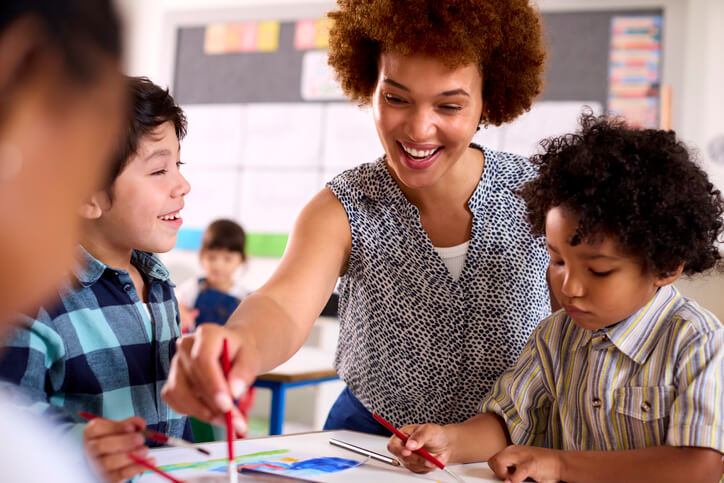
Working with children as an education assistant can be a very rewarding and fun career. It’s also a big responsibility to assist students and teaching staff through the process of imparting essential skills and knowledge to the next generation. In addition to child development, mental health, the principles of education, and other industry-specific competencies covered in our 22-week education assistant certificate program, you’ll need a strong command of various soft skills like communication. In this blog, we’ll explore how to communicate effectively with students. Keep reading for some best practices to remember.
Set Realistic Expectations
Students’ developmental stage will significantly affect their ability to listen, understand, and respond appropriately. To foster effective communication with students and prevent frustration, understand the characteristics of each cognitive and social developmental stage to manage your expectations.
Learn about different learning difficulties that may affect a student’s communication ability. Once you’ve established a relationship with the class you’re assisting and have a good idea of what each student is capable of, be sure to set clear communication expectations (for example, raising hands before speaking in class, asking to go to the washroom, etc.).

Adjust Your Approach Based On Each Student’s Needs
Every child is different. Communication techniques that work for one student may be less effective with another. After education assistant training, developing positive, trusting relationships with students goes a long way in terms of determining their individual needs. Be observant on the job and continually reflect on what is working and what isn’t. Your flexibility will help to improve pedagogical relationships, increase comprehension of course material, and foster a more positive attitude toward learning.

Focus On The Positive After Education Assistant Training
When working with children or anyone, it’s important to remember that positive reinforcement is much more effective than negative reinforcement. It boosts children’s confidence, encourages positive social and academic habits, increases student engagement, and encourages efficiency in class. When communicating with students after completing our education assistant course, focus on the positive. What are some practical ways to apply this? Try some of the following tips.
- Use reward charts to acknowledge and reinforce positive behavior
- Use sincere verbal praise
- Allow special privileges when appropriate and warranted
- Give out stickers
- Write positive notes that students can look back on
Create A Safe Space
Communication is a two-way street. As an education assistant, you’ll want to ensure that students trust you enough to approach you with concerns about their learning or well-being. To create a safe space for students, always be inclusive and supportive. Encourage each student to speak freely and always refrain from showing favoritism. When asked questions related to course content, always answer positively and exercise patience when there are problems with comprehension.
Are you ready to become an education assistant?
Contact Discovery Community College.
